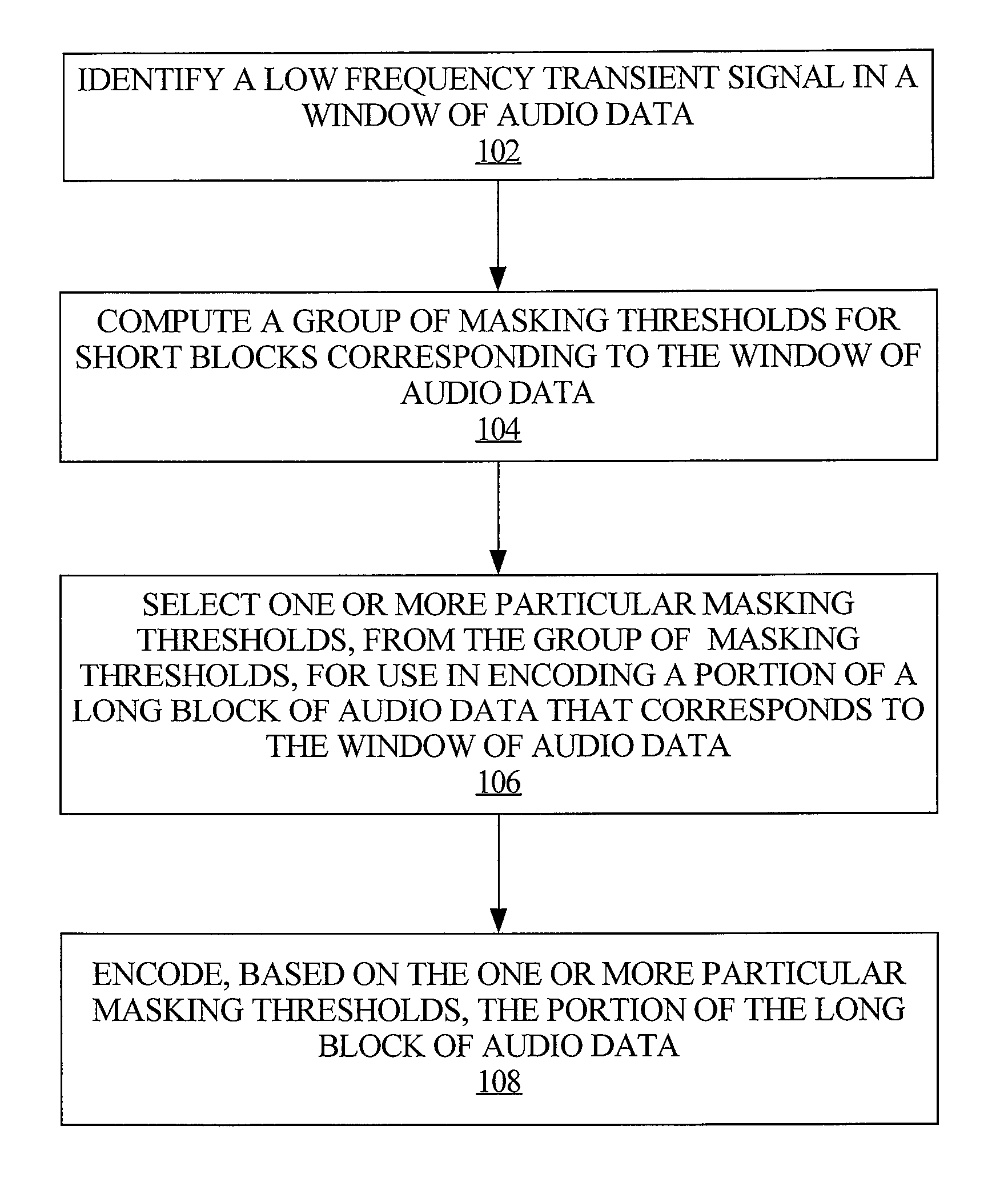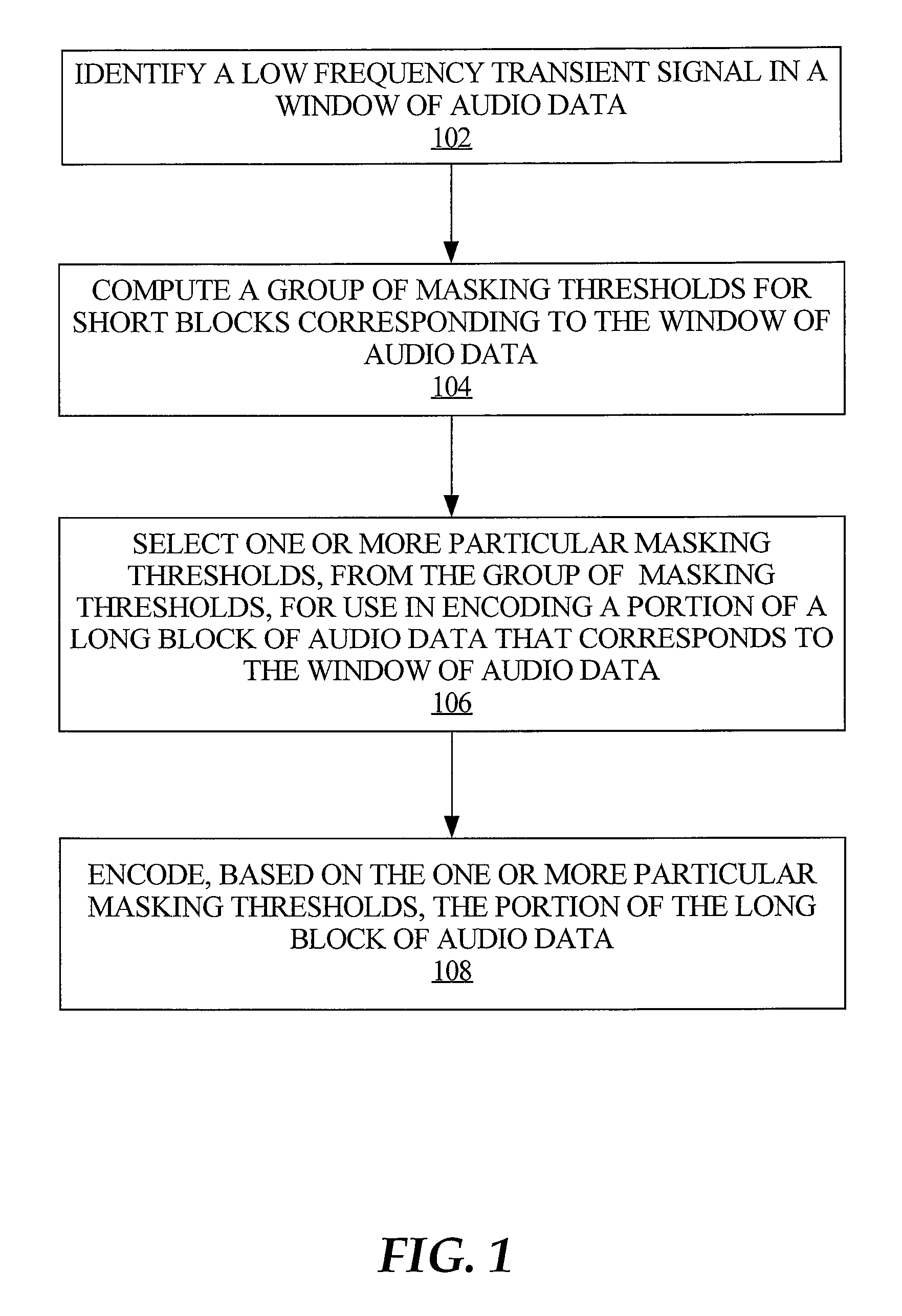Adapting masking thresholds for encoding a low frequency transient signal in audio data
a low frequency transient and threshold technology, applied in the field of digital audio processing, can solve the problems of pre-echo artifacts, human inability to hear noise, and spread of noise to produce noise above the level of original waveform
- Summary
- Abstract
- Description
- Claims
- Application Information
AI Technical Summary
Problems solved by technology
Method used
Image
Examples
Embodiment Construction
In the following description, for the purposes of explanation, numerous specific details are set forth in order to provide a thorough understanding of embodiments of the present invention. It will be apparent, however, that embodiments of the present invention may be practiced without these specific details. In other instances, well-known structures and devices are shown in block diagram form in order to avoid unnecessarily obscuring embodiments of the present invention.
Functional Overview
An improved audio coding technique encodes audio having a low frequency transient signal using a long block, but with a set of adapted masking thresholds. Upon identifying an audio window (which typically corresponds to a long block) that contains a low frequency transient signal, in one embodiment of the invention, masking thresholds for the long block are calculated as usual. However, in addition, a set of masking thresholds calculated for the 8 short blocks corresponding to the long block are al...
PUM
 Login to View More
Login to View More Abstract
Description
Claims
Application Information
 Login to View More
Login to View More - R&D
- Intellectual Property
- Life Sciences
- Materials
- Tech Scout
- Unparalleled Data Quality
- Higher Quality Content
- 60% Fewer Hallucinations
Browse by: Latest US Patents, China's latest patents, Technical Efficacy Thesaurus, Application Domain, Technology Topic, Popular Technical Reports.
© 2025 PatSnap. All rights reserved.Legal|Privacy policy|Modern Slavery Act Transparency Statement|Sitemap|About US| Contact US: help@patsnap.com



